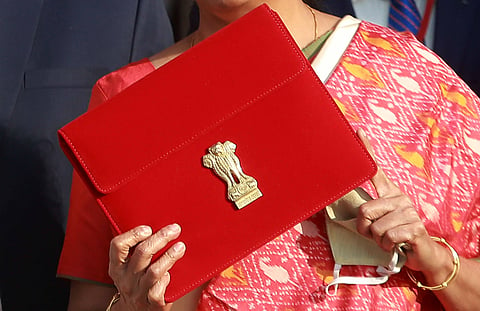

Expectations have a defining influence on politics — just as they have on economics. Ever since she took charge of the Finance Ministry in 2019, the derivatives market of political rumours has been abuzz about an imminent change. The options included a parade of politicos and technocrats. Such has been the interplay of politics and expectations that the third essay of Nirmala Sitharaman has effectively put a lid on all speculation about the “imminent” change at North Block. The promise of recovery and growth though is subject to the law of necessary and sufficient conditions.
The necessary conditions are manifest in the articulation of intent. On the face of it, Budget 2021 ticks almost all the boxes of expectations. The triggers for recovery articulated include social spend, investment in infrastructure to spur demand and job creation, and proposes measures for clearing the inventory of past sins. That though may not be sufficient as what matters in the real economy is translation of intent into action to ensure propulsion of the virtuous cycle of growth.
The matrix of risks — beyond worries about monsoon and crude oil prices — includes four major tripwires which the economy must be guided past.
Vaccination Rollout: Economic recovery is clearly dependent on social and economic engagement. This rests on the speed of vaccination rollout. Consider the math to appreciate the need for speed. The stated target is 300 million people would be vaccinated by August. As of now, India has vaccinated over 5 million citizens. To cover the remaining 295 million by August 1, the daily rate of vaccinations would need to be around 1.5 million a day and given the diktat of two shots, there is a need for significant ramping up of vaccinations from the 4.5 lakh vaccinations achieved in a day this week.
The magnitude of the scale suggests the burden must be shared. To enable acceleration, the government will need to craft a public-private programme. Enabling process for employers to vaccinate employees will expand reach and enhance speed. Further down the road, the system could be opened for paid-for-vaccination through private health care systems. Admittedly, there are complexities — of logistics, costs and indemnities. It is imperative that solutions are crafted to enable those at the lowest rung of the income quintile and those in the faceto- face economy providing services to engage and earn.
States Spending Capacity: The budget envisages large investments in the social sector and in infrastructure. For instance, Rs 64,180 crore is allocated for health and wellness centres to be expended in six years, Rs 1.97 lakh crore for infrastructure projects to be completed in five years, Rs 1.41 lakh crore for the Swacch Bharat initiative to be spent across five years and an outlay of Rs 2.87 lakh crore on water supply under the Jal Jeevan Mission for five years. This calls for augmentation of capacity and competencies in states to initiate projects and to spend the allocations. In the wake of the pandemic, state governments sought clearance for and expanded borrowings.
Fact is the track record of state governments on spending has been patchy to say the least. A Credit Suisse Report suggests state governments accounted for the bulk of the Rs 3.3 lakh crore of government cash with the RBI.
Dysfunction in Disinvestment: The fiscal of math of the budget rests on a slew of intentions. One of them is a disinvestment target of Rs 1.75 lakh crore. Last year, the government targeted Rs 2.11 lakh crore but could raise just a fraction of it. The fact that the government couldn’t monetise its assets on the back of the rise in stock markets in 2020 is just one episode in the long saga of dysfunctional approach to disinvestment. Since 2016, when the government unveiled its first list of 23 PSUs to be disinvested, there has been only one big tag disinvestment.
That of HPCL to another government owned entity called ONGC. This year’s budget makes a courageous and welcome departure from the past by inducting the phrase ‘privatisation’ in its plans to raise resources. Unless the word is backed by action, the fiscal math of the budget could wobble. Higher borrowings and attendant consequences have the potential to stall and hurt recovery.
Inventory of Sins: Money, the cliché has it, makes the mare go. Credit is a critical input for fuelling growth. Earlier this year, the RBI cautioned that gross non-performing assets in the banking sector could touch 13.5 per cent to total advances by September — in absolute terms, this translates to around `15 lakh crore. The problem of bad loans has haunted the economy for over six years and represents a significant risk.
Arguably, the level of bad loans may come down with recovery but the mess in the financial sector needs to be addressed if economic growth is to be sustained. The proposal of a bad loans bank aka ARC will mitigate pain. But given the level of systemic sloth — the pendency in the insolvency process — the need for urgency in action is critical. How the government propels this would have a material impact on the aspiration for recovery and growth.
It is critical to keep in mind the organising principle of growth when ensuring the navigation past the tripwires. The longer an economy performs below potential the greater is the threat of potential growth rate being dragged lower.
Shankkar Aiyar
Author of The Gated Republic, Aadhaar: A Biometric History of India’s 12 Digit
Revolution, and Accidental India shankkar.aiyar@gmail.com